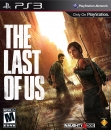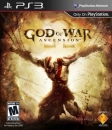REVIEW: RAIDEN IV: OVERKILL
The problem with Raiden IV when it first debuted here in North America back in 2009 on the Xbox 360 was simply that it was overpriced for the amount of content it offered. $40 was just far too high of a price point for anyone outside of the hardcore shoot’em up fanbase. This was unfortunate, though, because what Raiden had to offer was actually quite mechanically sound. Ultimately, this resulted in a game not being experienced by as many people as it maybe should have been. Now fast-forward to 2014, and we have UFO Interactive’s PS3 enhancement Port, Raiden IV: OverKill. With a much more digestible digital sticker-price and some new gameplay additions, loyalists of the shooter genre have a solid game to sink their teeth into for a long time to come. Let’s find out why.
Raiden IV: OverKill is a vertical-scrolling shoot’em up in the vein of classics such asDoDonPachi, Radiant Silvergun and Espgaluda. But while those particular titles are fairly hardcore manic shooters, Raiden is a more methodical series less concerned with hypnotic patterns of death-dealing projectiles, and more about using a sound-mind and various weapon options to make it through all the chaos (though it’s still very bullet heavy, mind you). This approach is a breath of fresh air considering the SHMUP genre was mostly dominated by CAVE’s mega intense bullet-hell shooters last generation. Thus, this more straight-forward approach ultimately means a more accessible title with a less infuriatingly steep learning curve, making it a great title for folks wanting to cut their teeth on these types of games. That being said, Raiden IV is such a special game in that it doesn’t just pander to newbies. In fact, genre-veterans will find themselves right at home with the various difficulty settings and overall number of ways there are to play the game, and play it well.

While many of the aforesaid SHMUP titles shoehorn folks into one style of playing, by only providing a small amount of ways to actually make it through each stage without dying a dozen times, Raiden IV is more about providing players with a series of avenues to explore, all of which feel viable. Sure, the game is still very much so entrenched in the foundation of shoot’em ups — meaning that a great deal of success will come from trial, error, and memorization of enemies, but it doesn’t solely hang its hat on this mechanic. For starters, there are three ships from which to choose, all of which play somewhat differently from one another (though not terribly so), and a handful of weapon-types. Weapons are upgraded throughout the stages in real-time, and are acquired through picking up items that drop from blown-up bad guys. This all sounds like standard stuff, but it’s the small change-ups that make OverKill a unique and rewarding game.
In most shooters, power-ups act as loot-drops and are totally static. Enemy A drops Item B, and that’s that. Here, though, Enemy A drops Item X which turns into items B, C, and D depending on how long a players wait to pick it up and at what point in its rotation it’s acquired. It’s a cool system that demands extra attention; knowing that a certain stage is not one in which a player wants to use a straight-firing laser means that when an item drops and its first rotation is said laser, the player will have to buy time until that item rolls over to the next, more useful upgrade. It’s a tense system that makes the player fight for their survival in ways that aren’t strictly dependent on dodging bullets. In truth, Raiden IVdoesn’t burden itself with this one-tricky pony mentality. So in essence, while other games of this ilk will make dodging the primary means of winning, OverKill focuses on a healthy blend of dodging and shooting, making sure that players are doing both in a sort of inspiring harmony. In some ways, this system is more challenging, or at least more rewarding, than the usual “learn bullet pattern, avoid bullet pattern” stuff that has become practically synonymous with the genre as of late.
Speaking of challenging, Raiden IV is no walk in the park. With over half a dozen stages and a litany of difficulty selections, there’s quite a bit of variety to experience. Fortunately, the game rarely feels unfair in its difficulty. Instead, it strikes a nice balance of giving folks a breather from some of the more intense, bullet-ridden battles and then ratcheting up the intensity during final showdown encounters that cap off each chapter. Of course, there are several modes to try out as well to better understand which gives the right challenge for each individual player.
Obviously, there’s an arcade mode, which is probably a good place to start for newbies, as it’s more barebones and transparent in its expectations of players. This specific mode has various difficulty options too, so that makes it even more pick-up-and-play no matter the level of skill being brought to the table. There’s also a score attack, Additional Mode as well as a few others. And then we get to that which acts as the game’s subtitle: OverKill mode.
OverKill mode is what this game should be played for, truthfully. It adds just enough to feel fresh while not changing the base mechanics at play. Chief among its defining qualities is the fact that now many of the larger ships are able to be given extended damage beyond their initial life. When they are being destroyed in this way, there are five degrees of “OverKill” that decide just how many points are given from the medal’s that are dropped as a result of the shooter-y. This simple concept adds much to the gameplay and stage strategy, as to achieve a full OverKill, it will require folks to point-blank or bomb the eligible ships like a mad-man. The point in all of this is really basic, though: the medals earned from this method reward players with an exorbitant amount of points. Collect enough and players will be soaring to the top of the leaderboards. What’s even better about this mode is that two brand new stages have been included in its level library.
On top of that, there is an assortment of play-style options for some of these modes, which allow folks to even control two ships at once. This clearly is pretty insane, and is probably best left for the experts, but the mere fact that it’s a possibility is enough to make the player feel as if there are more things to do here than just run through the stages — which can be completed in the expected 25-40 minutes, maybe more, depending on any level-looping. To top off this drink of shoot’em up goodness, there are of course the aforementioned learderboards in addition to a replay feature, sure to satiate the desires of the truest diehards.
Of course, not everything is wonderful in this package. Most notable is the fact that Raiden IV is an old game at this point. As such, its visuals are less than impressive. It’s not a particularly ugly game, but it certainly looks like a title that was originally released in arcades way back in 2006. The texture work is particularly unimpressive, backgrounds can be noticeably sparse and lacking in detail, and explosions won’t blow your socks off. Yes, ship models are nice enough, and the weapon effects, such as neon blue and purple lasers, do look lush against the drab backdrops, but on the whole, this is far and away not a looker of a game — especially when put up against something like last year’sDoDonPachi: SaiDaiOuJou.
Thankfully, the sounds of Raiden IV fair a bit better, at least in terms of soundtrack. The audio effects are pretty run-of-the-mill: explosions sound like explosions, and missiles have a nice whirling sound to them as they set eyes on their intended target, but it’s nothing spectacular. The soundtrack on the other hand is pure rock brilliance. It has a decidedly throwback style to it, making most tracks sound like they just crawled their way right out of a 1980s arcade shooter. There’s an excess of synth and wailing guitars to be heard, and the pulsating beats of the more anthem-like rock tunes supplement on the on-screen carnage quite nicely. Sadly, we did encounter an audio glitch during play where the music just cut out abruptly. While it picked back up after a few heartbeats, it would seem to indicate some careless work on the part of those responsible for ensuring an audio-perfect experience.
The 360 reigned supreme last generation when it came to SHMUPs, leaving PlayStation enthusiasts out in the cold. Over the last 18 months, though, things have gotten better, what with the release of Under Defeat HD, Ketsui and the forthcoming Caladrius Blaze. Hence, UFO and developer MOSS bringing Raiden IV to the PlayStation 3 should be acknowledged with great excitement by fans, as this is one hell of a shooter, even if it is not lighting the world on fire with innovation. The upgradable weapons, tight gameplay, accessible (but challenging) level of difficulty, silkly smooth controls and insidiously addictive OverKill mode all come together to form a game that can’t be missed for genre fans — especially for its steal of a price-tag. Sure, it’s an old game at this point and certainly shows that age in its aesthetic, but its gameplay conventions are rock-solid and time-tested all the same. Simply put, this is the definitive version of Raiden IV. If you’re a fan, there’s a lot to love here.![]()
http://www.hardcoregamer.com/2014/05/01/review-raiden-iv-overkill/83239/





























































